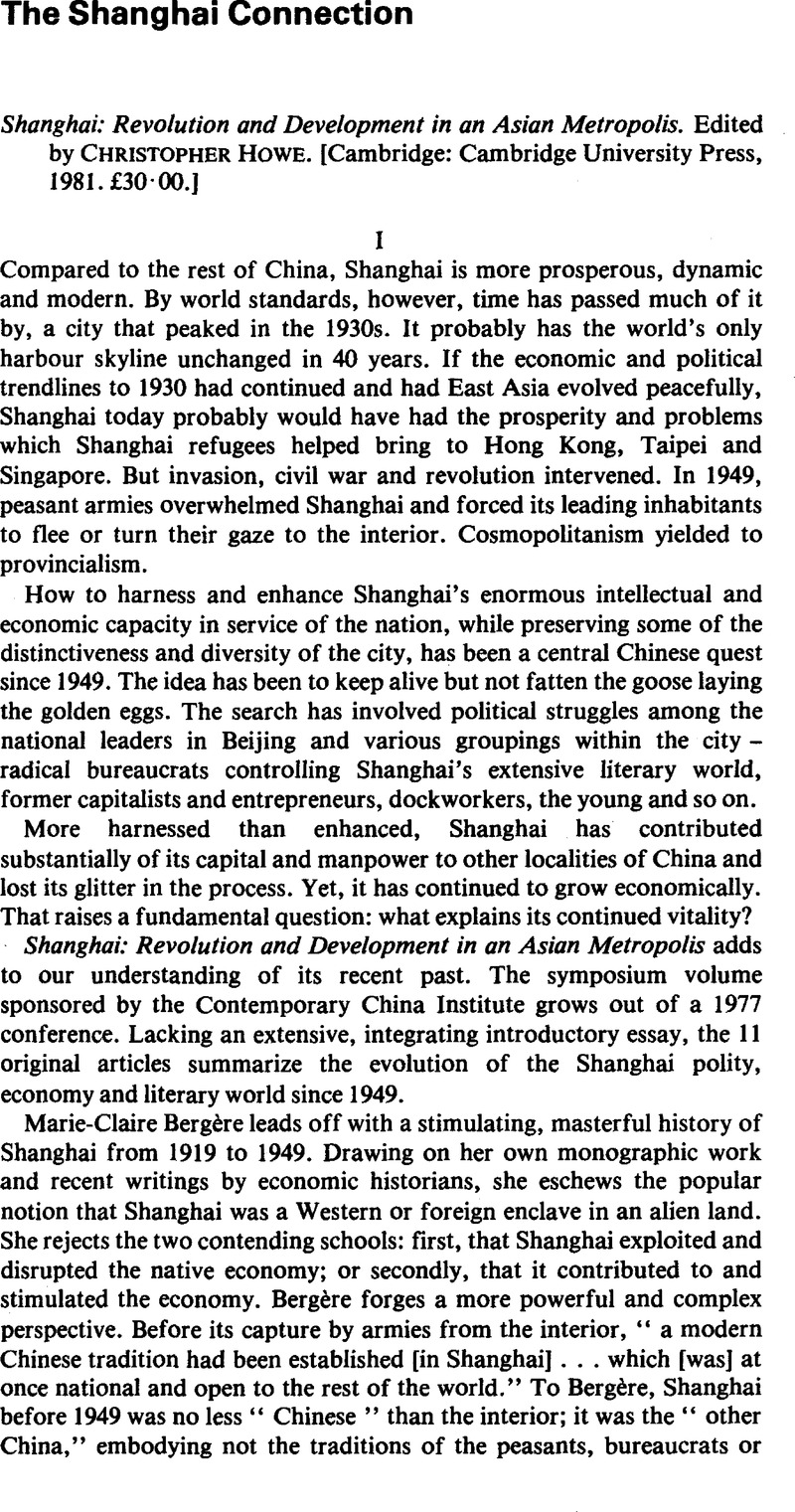Article contents
The Shanghai Connection
Published online by Cambridge University Press: 17 February 2009
Abstract

- Type
- Review Articles
- Information
- Copyright
- Copyright © The China Quarterly 1982
References
1. Cohen, Paul, Between Tradition and Modernity (Cambridge, Mass.: Harvard University Press, 1974), especially Chap. 9.CrossRefGoogle Scholar Fairbank, John, “East Asia: our one China problem,” Atlantic, 09 1976.Google Scholar
2. Gardner, John, “The Wu-fan campaign in Shanghai,” Barnett, A. Doak, ed., Chinese Communist Politics in Action (Seattle: University of Washington Press, 1969), pp. 477–539.Google Scholar
3. Lieberthal, Kenneth, Revolution and Tradition in Tientsin, 1949–1952 (Stanford Press, 1980).Google Scholar Vogel, Ezra, Canton Under Communism (Harvard Press, 1969).Google Scholar Chamberlain, Heath B., “Transition and consolidation in urban China: a study of leaders and organizations in three cities, 1949–53,” in Robert Scalapino, ed., Elites in the People's Republic of China, pp. 245–301.Google Scholar
4. White, Lynn, “Leadership in Shanghai, 1955–1969,” in Scalapino, ed., op. cit. pp. 302–80Google Scholar. White, , “Shanghai's polity in the Cultural Revolution,” in Lewis, John, ed., The City in Communist China (Stanford University Press, 1971).Google Scholar Rice, Edwin, Mao's Way (University of California Press, 1972).Google Scholar
5. Merle Goldman is more circumspect in her discussion of this crucial issue. See her China's Intellectuals: Advise and Dissent (Cambridge: Harvard University Press, 1981), p. 156.Google Scholar
6. Lardy, Nick, “Planning and allocative efficiency in Chinese agriculture,” paper for Conference on Bureaucracy and Rural Development sponsored by the Joint Committee on Contemporary China,21–28 August 1981.Google Scholar
7. See in particular Skinner, G. William, “Urban and rural in Chinese society” and “Cities and hierarchy of local systems” in Skinner, , ed., The City in Late Imperial China (Stanford University Press, 1977).Google Scholar
- 1
- Cited by




